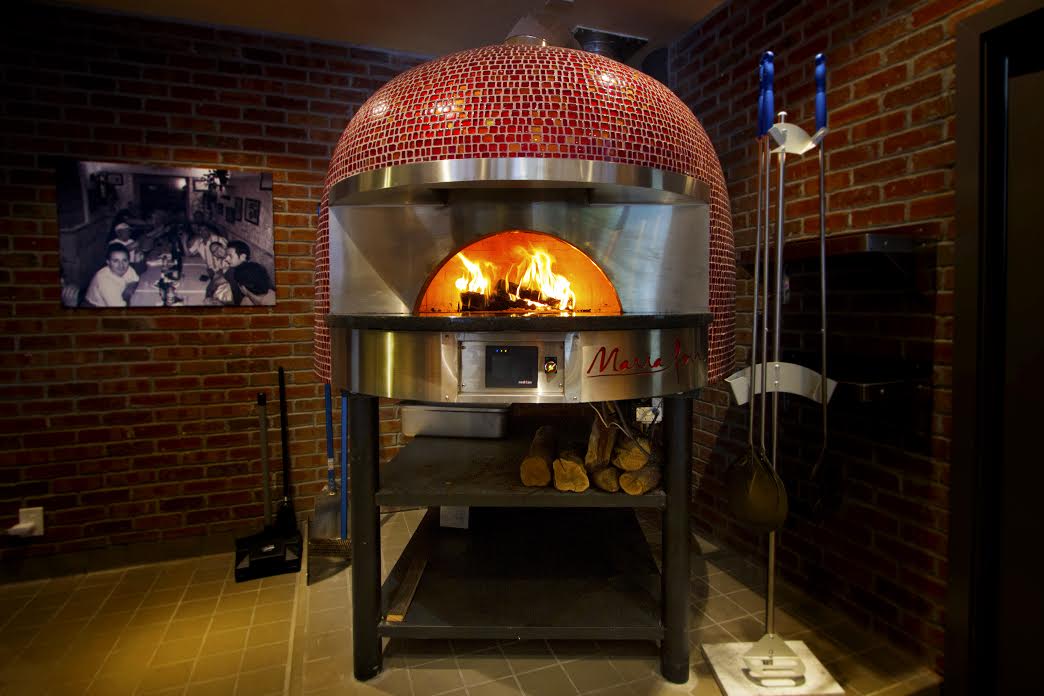The advent of fast-casual pizza has brought with it a bevy of oven prototypes. New to quick service, these ovens harken back to old-school Italy, long before the days of speedy electric, gas, and convection ovens.
From wood-fired to stone to brick, these ovens boast a speedy cook time and many operators swear by their consistency in delivering the right texture and flavor.
Nevertheless, these appliances are no small matter—both in terms of size and cost.
“Besides the dough, the oven is just as important. … That foundation of how you build a product—a pizza—how you bake, really starts and ends with the oven and the dough,” says Glenn Cybulski, CEO and executive chef of Persona Pizzeria. “We’re using Marra Forni in every single store that we’re opening. We’re using it because we know the quality is there.”
The tale of Persona’s oven can be traced back to the Campania region of Italy where the Marra brothers started the Marra Forni (forni meaning ovens). About a decade ago, Marra Forni began manufacturing in Beltsville, Maryland, while still building each oven by hand and importing key ingredients from Campania, including the brick sand, which Cybulski considers to be of the highest quality.
From Beltsville, the 5,500 pound ovens are delivered to stores across the country (Persona has locations in California, Illinois, and South Carolina). Marra Forni has an in-house engineer who has designed a special crating for the ovens, but still Cybulski calls it an “engineering feat” that requires six to seven movers. The logistics are also trick—sometimes roads have to be closed to make the deliver or alleys aren’t wide enough for the truck.
“Everything else is pretty easy. The oven is the only thing that gives me angst anymore and it will continue until I get the phone call that the oven is set,” Cybulski says. Once delivered, the oven has to be installed into the kitchen. Cybulski recalls one instance where only he and a contractor were making the installation; it took eight hours, but it was a labor of love. “I’m a chef so tedious and slow really don’t work for me; I’ve got to get things done. It’s not necessarily my nature, but it’s nice to get to an age where … you have the patience to do it.”
Even after the manufacturing, delivery, and installation, operators face another test of patience: curing the oven. Over a three-day period, the oven must be brought to a low temperature and then allowed to cool. This wicks the moisture out of the bricks. If the process is too slow or too fast, it can break the base of the oven—something Cybulski says sounds like a canon firing.
Once installed and cured, the ovens are virtually impervious to damage. The wood-fire ovens might not boast the bells and whistles of more advanced models, but it’s still an impressive contraption. For one, the ovens do not cool completely, even over night. Cybulski says that when employees first come to work in the morning, the temperature of the oven is still at 300 degrees Fahrenheit.
It cooks the pizza perfectly. It really is engineered from hundreds of years of building ovens in homes in Italy,” he says.
Cybulski has even installed a smaller version of the Persona oven on his own backyard patio.
Persona Pizzeria is not the only fast-casual pizza concept to boast a traditional, wood-firing oven that weights a couple tons. Indeed, the fast casual, which has only four stores and three more in the works, lags behind competitors in terms of store quantity. Cybulski doesn’t see this as a shortcoming, though. Instead, he believes the stage is being set for a veritable battle of the brands.
“Everybody jumped on the bandwagon of this fast-casual, create-your-own super fast pizza. What’s going to happen in next five years, is that when the excitement of getting an $8 pizza in five minutes is over, then what’s going to stand out?” The quality is going to stand out,” Cybulski says. “Nobody else can say they’re doing what we’re doing.”
By Nicole Duncan










